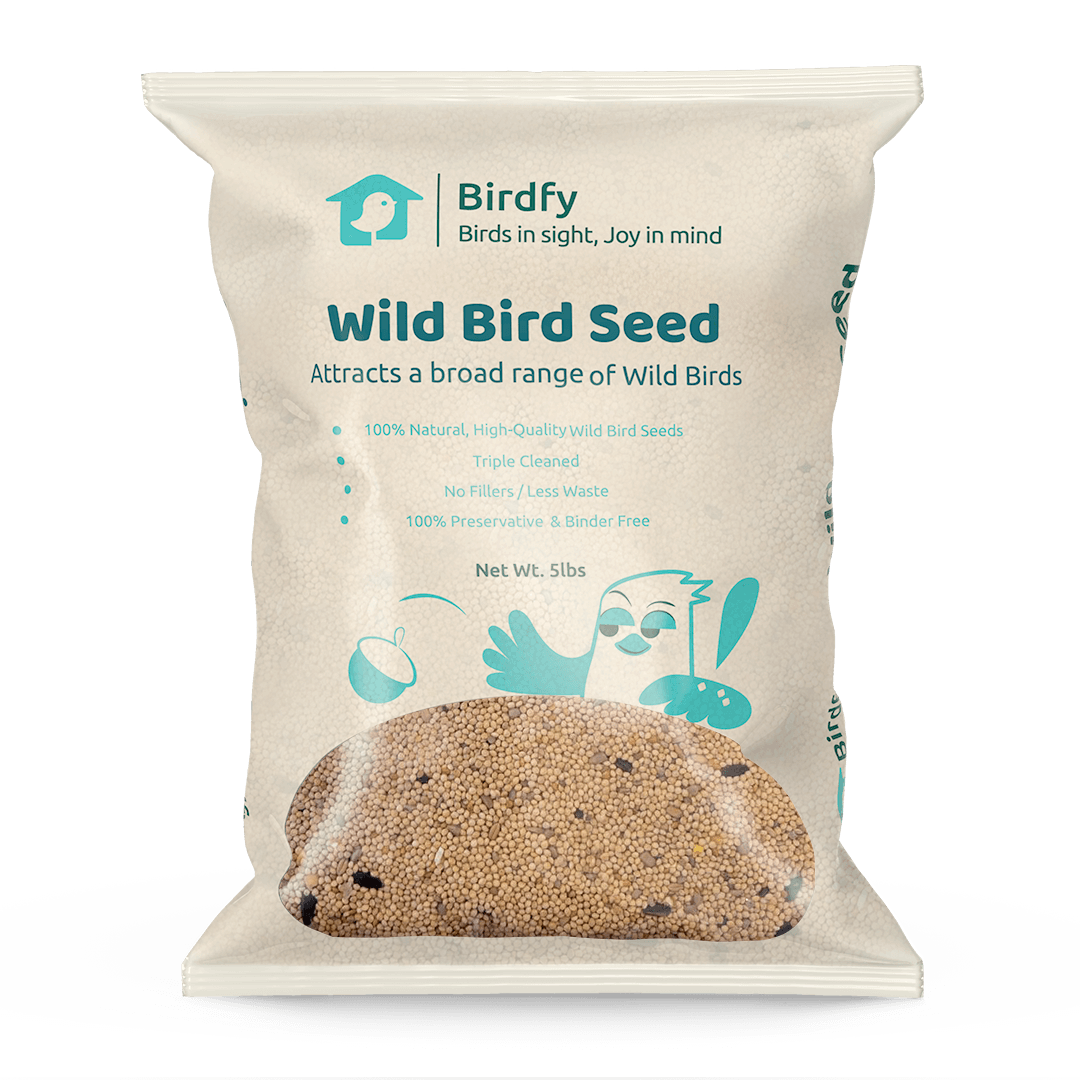The Impact Of Temperature Variability On Nesting Success In Birds
The breeding success of birds is highly dependent on the conditions under which they breed. As temperature changes due to climate change progresses, songs fly birds, especially songbirds, struggle to feed and care for their young ones. Specifically, temperature variations, including cold fronts and heat waves, interfere with breeding seasons, reduce food supply, and impact the health of adult birds and their young ones. This extensive article also examines how these temperature fluctuations affect bird habitats and their chances of nesting.
Introduction
The Impact Of Climate Change On Bird Habitats
Due to the increased rate of climate change, different ecosystems have been affected, and bird habitats are among those most affected. Some bird populations breed in specific environmental conditions that are now changing because of rising global temperatures and more frequent and severe weather disturbances. These changes can involve as basic things as food supply or as complex as the time of the year for migration or nesting.
How Temperature Fluctuations Affect The Nesting Success Of Songbirds
Songbirds, especially those that nest in the temperate climate, are very sensitive to changes in temperature. Such factors as food supply, suitable habitat for nesting, and parental care influence their breeding performance. As temperatures fluctuate more often, it becomes more challenging for songbirds, for example, to protect their eggs and chicks from cold weather during breeding season or otherwise hot weather. Such high and low temperatures can also lead to the failure of breeding, abandonment of nests, and, in certain situations, long-term decline of populations.
Section 1: Research Background
Studies reveal that fluctuations in temperature have a major effect on the success of bird nesting, influencing the incubation of eggs, the survival of chicks, and the behavior of the parents. Many bird species may experience higher levels of stress and lower rates of successful reproduction as a result of temperature fluctuations.
The Phenomenon Of Birds Nesting Earlier In Spring.
Studies in the last few years have revealed that bird species nest earlier in the spring. This change has been attributed to the early temperature increase since birds start breeding early in the year. This is an adaptation to changing conditions, but it results in a situation where food resources such as insects are sometimes more abundant than the needs of the nestlings. Such a misunderstanding dramatically decreases the likelihood of chicks reaching the age of reproduction.

The Concept Of Temperature Variability And Its Relation To Climate Change
Temperature variability means changes in temperature, whether frequent or severe, such as cold snaps in the summer or heat waves in the winter. These alterations are climatically induced and alter the ecological conditions to which avian species are adapted. In unpredictable temperatures, birds face situations that are not ideal for breeding or nesting, making it difficult for them to nurture their young.
Section 2: Research Methods
Data sources, study subjects, and methodology were used in the study to keep an eye on nesting locations. An evaluation of the impact of temperature variations on bird nesting success was conducted by gathering data on incubation, chick survival rates, and parental behaviors. Below is detailed info about these research methods!
Data Sources: Cornell Lab Of Ornithology's Nestwatch Project
As a basis, the researchers used the data provided by the Cornell Lab of Ornithology's NestWatch project to analyze the effects of temperature fluctuations on bird nesting success. NestWatch is a bird monitoring project which involves documenting information about bird nesting in North America. It also reviews the timing of nesting, clutch size, and breeding performances of bird species under different circumstances.
Study Subjects: 300,000 Breeding Bird Records
It based its analysis on more than 300,000 breeding bird records from a variety of species across the country. This huge database made it possible to study the effects of temperature variation, cold snaps, and heat waves on the nesting success of different bird species. The data collected in this study allowed the authors to find patterns and relationships between temperature and reproductive health.
Methodology: Assessing The Impact Of Cold Snaps And Heat Waves On Nesting Success
The research approach was to monitor the reproductive output of birds during temperature stress, for instance, during early cold sprints in spring or late heat waves in summer. The authors contrast the numbers of successful nests (those that produced offspring) at normal temperature conditions with those that occurred at temperature fluctuations. This approach helped us understand the effects of climate change stressors on birds.
Section 3: Research Findings
Research findings show that higher temperature variability was associated with bird reproduction, chicks’ survival, and decreased nesting success. Extreme temperature also has a detrimental effect on aerial insectivores in general. Read these research findings in detail below!
Changes In Reproductive Success During Cold Snaps And Heat Waves
It was established that temperature stress seriously affects bird reproduction. Cold snaps are also most detrimental to bird nesting. During the breeding season, most bird species face problems in egg-laying or total failure of nests due to temperature fluctuations. Also, heat waves had their problems: some species' nesting success was negatively affected by heat and dryness.
Data Analysis Results: 16 Bird Species Experienced Reduced Success During Cold Snaps
All 16 bird species studied were affected by cold snaps in some way, regarding reduced reproductive success. The research established that due to extremely low temperatures at the right time of nesting, some of the species either delayed laying eggs, reduced the number of eggs, or left the nests. For instance, these cold spells affected the open country species, including ground-nesting birds.
11 Bird Species Had Reduced Success During Heat Waves
The present study also revealed that 11 bird species failed to nest successfully during heat waves. In species that build shallow nests that offer little or no shade, high temperatures can be fatal to the nestlings. Also, water and food scarcity during heat waves worsen the situation because adult birds cannot easily find food for their young during such scorching weather.
Sensitivity Of Aerial Insectivores To Temperature Extremes
The aerial insectivores, namely the swallows and swifts, were seen to be most affected by extreme temperatures. This type of food is abundant in flying insects, which, in turn, become less active during cold snaps and heat waves. This is because insects that are the main food source of aerial insectivores are less available during these times, which means that they are unable to feed their young, hence low chances of reproduction. 
Section 4: Analysis Of Influencing Factors
Different factors also affect how temperature variability affects bird nesting success. The most important factors include the availability of food, the timing of reproduction, and the inherent features that define a bird's capacity to handle stress.
The Impact Of Cold Snaps On Insect Availability And Its Consequences
Bird population and nesting success during cold snaps are also dependent on food supply. Insects, which are the major food of many bird species, are also scarce during the cold season, and hence, adult birds have to forage for food more often than they would during other seasons. This makes eggs and chicks more susceptible to cold weather, and hence, most of them die, resulting in low nesting success.
Vulnerability Of Nestlings And Responses From Adult Birds
The nestlings are sensitive to temperature changes because they cannot control their body temperature. Nestlings are vulnerable to cold snaps that may result in them getting chilled, hypothermia, and death. In response, adult birds may spend more time on the nest to warm their young, but this will mean that they spend less time searching for food. Heat waves, for instance, may result in nestling overheating, dehydration, and lack of energy for growth.
Short-Term And Long-Term Health Effects
The impacts of temperature oscillations are evident and swift, negatively affecting the reproductive success of the species and leading to chick death. However, the relevance of more frequent temperature variations could cause some shifts in bird populations in the long run. Those species that cannot change with these new conditions may experience population reduction, while others may innovate new ways of dealing with climate change.
Section 5: Trends In Climate Change
The broader trends in climate change suggest that temperature variability will become more frequent and intense in the coming decades.
Analysis Results From 100 Years Of Weather Data
The research also stresses the importance of temperature stability for bird reproduction. Cold and heat waves caused by climate change significantly challenge bird life. These results suggest that more detailed work needs to be done to determine how climate change impacts birds' living environments and ability to reproduce and that conservation measures should be increased to prevent these effects.
Changes In The Timing Of Extreme Temperature Events And Their Impacts
Another outstanding feature of climate change is the phase change of temperature extremes. They are also advancing into the spring, usually when the birds start their nesting, while heat waves begin earlier and last longer. These changes are especially detrimental for birds because they make it difficult for them to time their breeding to match the availability of food resources, thereby decreasing the fitness of their offspring.
Section 6: Conclusion And Future Research Directions
The study on temperature fluctuation and bird nesting success indicates that climatic change is a rising factor affecting bird populations. The research findings show that it is necessary to take into account how heat and cold stress influence not only one species but also whole ecosystems because birds are key players in maintaining an ecosystem's balance.
However, when we consider the importance of the research and its main findings, the research underscores the critical role of temperature stability in bird reproductive success. Cold weather and heat waves, intensified by climate change, also threaten bird lives. These results give some suggestions for subsequent research on the detailed effects of climate change on bird habitat and reproduction and its implications for conservation.
Research that explores possible ways through which birds may be able to adapt to new conditions, such as alteration in migration or alteration in breeding times, will be crucial in assisting birds in dealing with the altered conditions. Furthermore, investigations on the methodology of habitat restoration and conservation may offer useful information on the most effective ways of mitigating the impacts of climate change on threatened species.
Lastly, we should look at some potential implications for the future survival of bird species. According to the current trend in climate change, numerous bird species may be threatened in the future. It is an expectation that species that cannot change their breeding times or the time that food is available in their habitat are likely to experience population decrease or even death. Preventing or minimizing the loss of bird habitats and responding to climate change will be paramount in birds' long-term survival.
Share
































